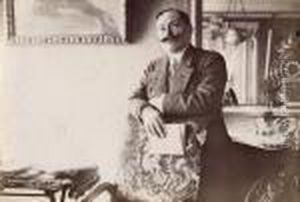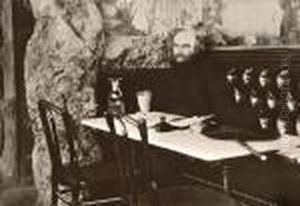Paul Marsan, Dit Dornac Paintings
Paul Marsan, commonly known by the pseudonym Dornac, was a notable French photographer and caricaturist born in 1858. His work primarily spanned the late 19th and early 20th centuries, capturing a vibrant era of French culture and society. Dornac's contribution to the art world is particularly significant for his detailed photographic portraits of famous personalities of his time, including artists, writers, politicians, and actors, which provide a valuable historical record of the period.
Dornac's technique and approach to photography were ahead of his time. He had a unique ability to capture not just the physical likeness of his subjects but also a glimpse of their personality and essence. This was achieved through his meticulous attention to lighting, composition, and the setting in which he photographed his subjects, often including elements that related to their personal lives or professions. His portraits are characterized by a sense of immediacy and intimacy, making them more than just visual records; they are windows into the lives of some of the most influential figures of the time.
Aside from his photographic legacy, Dornac was also known for his caricatures, which were published in various periodicals. These works showcased his sharp wit and keen observational skills, often portraying his subjects with a mix of humor and critique. Through his caricatures, Dornac contributed to the vibrant satirical culture of the period, which played an essential role in the public discourse, often addressing social and political issues of the day.
Dornac's work provides a fascinating insight into the cultural and social milieu of France during a period of significant change and development. His portraits not only document the faces of those who shaped the arts, literature, and politics of his time but also serve as a testament to the power of photography as a form of art and historical record. He continued to work and influence the field of photography until his death in 1941, leaving behind a body of work that continues to be studied and admired for its artistic and historical value.

